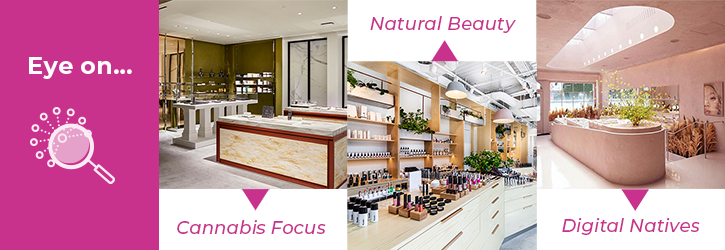While e-commerce continues to be a staple in the shopping habits of many consumers, brick-and-mortar retailers are combating this by offering consumers exclusive, experiential opportunities available only in stores. According to our recently published report, Beauty Retailing: U.S. Channel Analysis and Opportunities, retailers are utilizing immersive shopping to lure consumers back into stores.
Karen Doskow, Kline’s Consumer Practice Director, answers some of the key questions about this upturn, which has helped drive sales through departments, specialty stores, and mass outlets such as drug stores.
- How is brick-and-mortar capitalizing on key industry trends sweeping across all product categories in the cosmetics and toiletries market?
- The driving trend in the industry in recent years is natural and clean beauty, which has penetrated every product category. Specialty stores such as The Detox Market and Credo Beauty have gained traction in the industry as advocates for the clean and natural beauty movement, highlighting safe and effective ingredients.
- One ingredient in particular, cannabis, remains a hot topic in the beauty industry, and many retailers look to capitalize on the ingredient by bringing new brands into stores and offering spaces to educate consumers. Barneys opens “The High End,” a mini cannabis shop in Beverly Hills that offers consumers the opportunity to learn more about the benefits of cannabis in beauty products.
- Immersion and sensorial shopping seem to have become the point of differentiation for retailers. Which are some of the key retailers that offer these experiences?
- Retailers such as Sephora, Bath & Body Works, and Lush offer consumers the sensorial environment they crave. While many consumers check online for product information, these retailers offer sampling opportunities and personalized product assistance not available through the Internet.
- The market also witnesses a “global invasion” of foreign-based, vertically integrated specialty store retailers such as Natura Brasil, Aesop, Rituals, and Innisfree. Consumers are immersed in the cultural authenticity of the brands through the engaging in-store experiences.
- An interesting trend that emerges in 2018 is the uptick in digitally native brands entering brick-and-mortar. What are some of the driving influences behind this?
- For most brands, sustaining growth selling only through online channels will become increasingly difficult. Brick-and-mortar provides an opportunity for these beauty brands to interact with a larger segment of the population. Physical retailers such as Ulta are eager to take on these digitally native brands, while others, such as Glossier, open their own stores.
- What does the evolution of brick-and-mortar stores mean for the future of beauty retailing?
- Brick-and-mortar stores are taking note of the continued growth of the cosmetics and toiletries market, which shows no signs of slowing down. Offering unique experiences is just one of the ways retailers are adapting to the new consumer of beauty products. Our Beauty Retailing: U.S. Channel Analysis and Opportunities report highlights this, as well as other key trends impacting the cosmetics and toiletries market.
An interview by Alyssa Behrendt, Market Research Analyst, Consumer Products.

